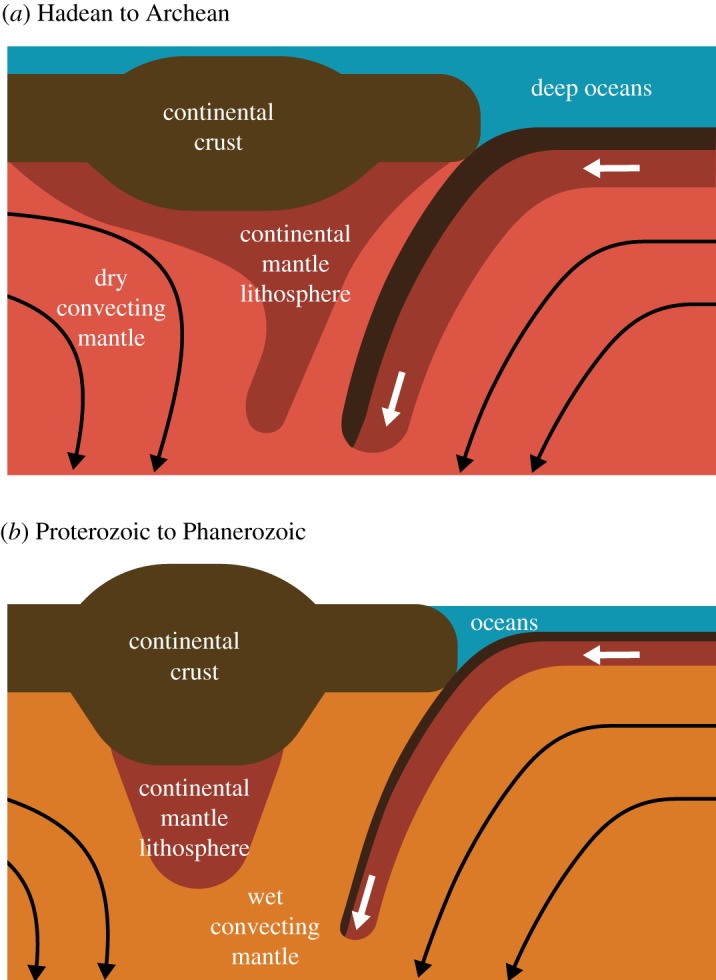Figure 10.

Schematic for the working hypothesis on the coupled ocean–crust–mantle evolution. The illustrations are not drawn to scale in every possible detail, though certain details are intentional. The topography of continental crust was probably more reduced in the past because of hotter geotherm [213]. Continental mantle lithosphere could have been thicker in the past if we take into account the effect of convective erosion [208,214]. No significant difference in plate velocity is expected (figure 9b), but the structure of oceanic lithosphere is very different because of the secular cooling of the mantle (figures 8a and 9a). The average thickness of continental crust is likely to have been stable since around 3 Ga [215]. Continental crust could have been largely submarine during the Archean, as suggested by the abundance of submarine continental flood basalts [216] and also implied by freeboard modelling [100].
